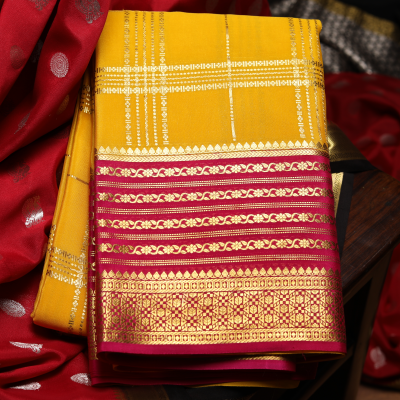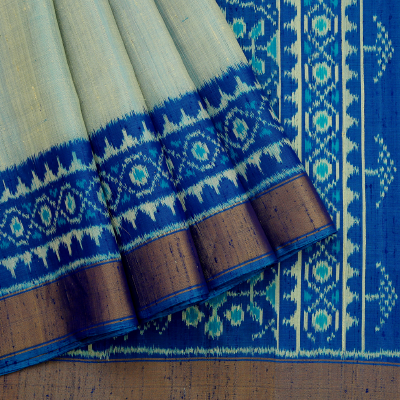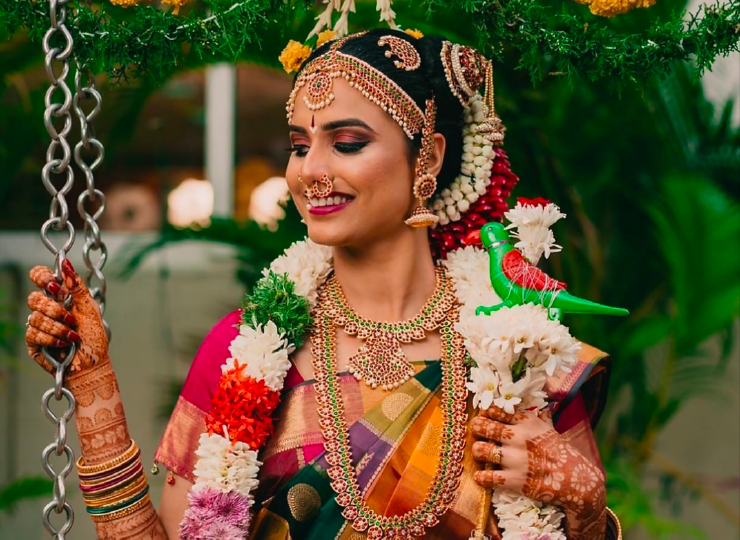Culture and traditions are an integral part of India and are often expressed through history, language, food, arts, geography, family values and weddings. The wedding customs of each community in India are so unique in their own ways. But there is one aspect that all weddings have in common: family, love, and culture.
The Wedding Narrative is a series of blogs in which we explore the fascinating traditions and rituals involved in the wedding of the various communities in India. Through this series, we would like our readers to know and appreciate our diverse culture and traditions. In the first edition of “The Wedding Narrative” we will be delving into the customs and functions of a Tamil brahmin wedding. The brahmin wedding is one of India's most colourful and spectacular weddings, lasting anywhere from three to five days.
Pandakkaal
The wedding festivities begin with the installation of the pandhal in front of the house. The first pole is set by the women of the house praying to the almighty for blessings and a successful wedding.

What you can wear?
Since Pandakkaal is a small function which takes place at home, the bride can wear a simple saree such as mysore silk, soft silk or an heirloom saree that holds a lot of emotion.


Viratham
The vratham, also known as jadaga namakaranam, is the first function that takes place after the bride's family welcomes the groom and his family to the wedding venue. Both families do it separately, with each praying to the kula deivam for wealth, fertility, and protection from the evil eye.
The Vratham is followed by Nichyadartham, during which the priest reads the wedding invitation to the well-wishers and family for the second time. Earlier, the vratham used to be performed on the day of the wedding. But due to time constraints, it is now done a day before the muhurtam.

What you can wear?
For the vratham and nichyadartham, the bride can choose an Ikat, Patola or Paithani weave in bright colours such as orange, yellow or pink since it is a morning function. The groom on the other hand can pair a classic gold zari veshti with a contrasting coloured kurta or shirt. For example, if the bride is wearing a purple ikat saree, the groom can also don a purple ikat shirt.


Muhurtham Day
The wedding day consists of many interesting rituals such as kumara bojanam, oonjal, kashi yatrai, malai matral, kanika dhanam, mangalya dharanam, grihapravesham and vilayadal.
The rituals start early in the morning at around 4:00 AM. The groom wears a white veshti that has been soaked in turmeric water the previous day in “Panjagacham style” while the bride wears a silk saree and is dressed like “Goddess Andal”.
Kumara Bojanam: The groom and his brother-in-law are seated on a mat, and bakshanam is served on a banana leaf. The purpose of this practice is for the bride's brother to learn what dishes the groom like so that he can ask his sister to prepare them for him.
Kashi Yatrai: The story of Kashi Yatrai is that of a groom who is unwilling to marry because he wants to go to Kashi and lead a celibate life. The bride’s father convinces him to marry his daughter which is followed by the bride and groom's malai matral. The musicians play the soulful melody "Malai Maatrinal Kodai Malai Matrinal" during the Malai Maatral.
Oonjal: The bride and groom relax and enjoy themselves on an Oonjal while the family elders perform "pidi suthal" to ward off evil eye. The Bride's family performs this practice before Mangalya dharanam. Following the mangalya dharanam, the groom's family repeats the ceremony.
Kanya Dhanam and Mangalyadharanam: After the oonjal ceremony, the bride's father performs the "Kanya Dhanam" rite, and the groom's side presents the bride with a 9-yard saree, also known as a madisar. The bride swiftly changes into the traditional madisar and makes her way to the stage for the mangalya dharanam. The groom ties the sacred yellow thread also known as thali around her neck while the bride is seated on her father’s lap. The bride's aunt then assists her in putting on the metti, followed by the Saptapadi, in which the bride and groom go around the sacred havan fire seven times.
Vilayadal and Grihapravesham: In the olden days, the bride was usually around the age of 11 to 15. In order to entertain her and make her feel at ease with her husband, the husband and wife play a few games together. After all these rituals, the groom’s family finally welcomes the bride into their house, which is known as “grihapravesam”. She is asked to light the lamp and distribute sweets to the relatives.
What you can wear?
The bride can wear a luxurious and elegant Kanjivaram silk saree in auspicious shades with traditional motifs until the Kanya Dhanam. Accessorize with heirloom gold jewellery and an andal kondai to complete the look. For the Mangalya dharanam, traditionally a maroon colour madisar is gifted by the in-laws, but you can also pick madisar in different shades which match the ambience. Remember that you won't have time to change your hairstyle or jewelry before Mangalya Dharanam. Hence choose accessories that will complement both the ensembles.


Sambandhi Virunthu: Sambandhi Virunthu is a post-wedding festival in which both sides of the family rejoice and appreciate the successful completion of all wedding customs and functions.
What you can wear?
Since this is more of a get-together party, the bride can wear a silk salwar suit instead of a saree. The groom can also sport a casual look such as an informal shirt and trousers.
In Indian marriages, the wedding celebration is not just about building a relationship between the couple but bringing the two families together in nurturing the alliance. Whether you are an aunt to the bride, a bridesmaid or a doting brother of the groom, we have a plethora of options ranging from Traditional Indian Wear to Ethnic Readymades for everyone in the family. You can explore our “Wedding Collection” at www.sundarisilks.com





